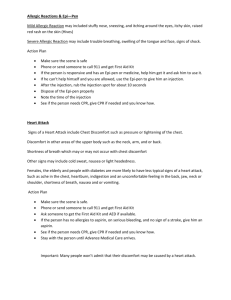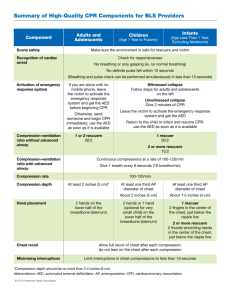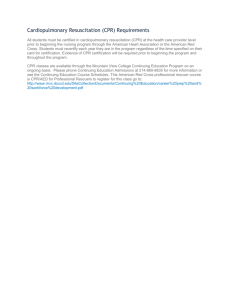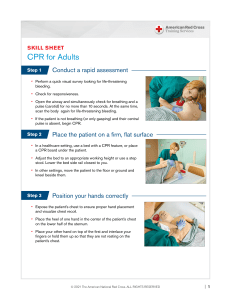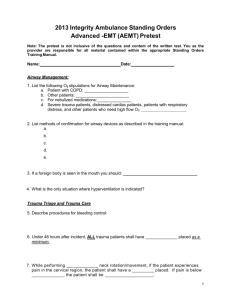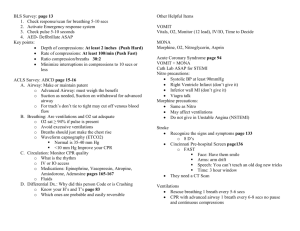file - BioMed Central
advertisement
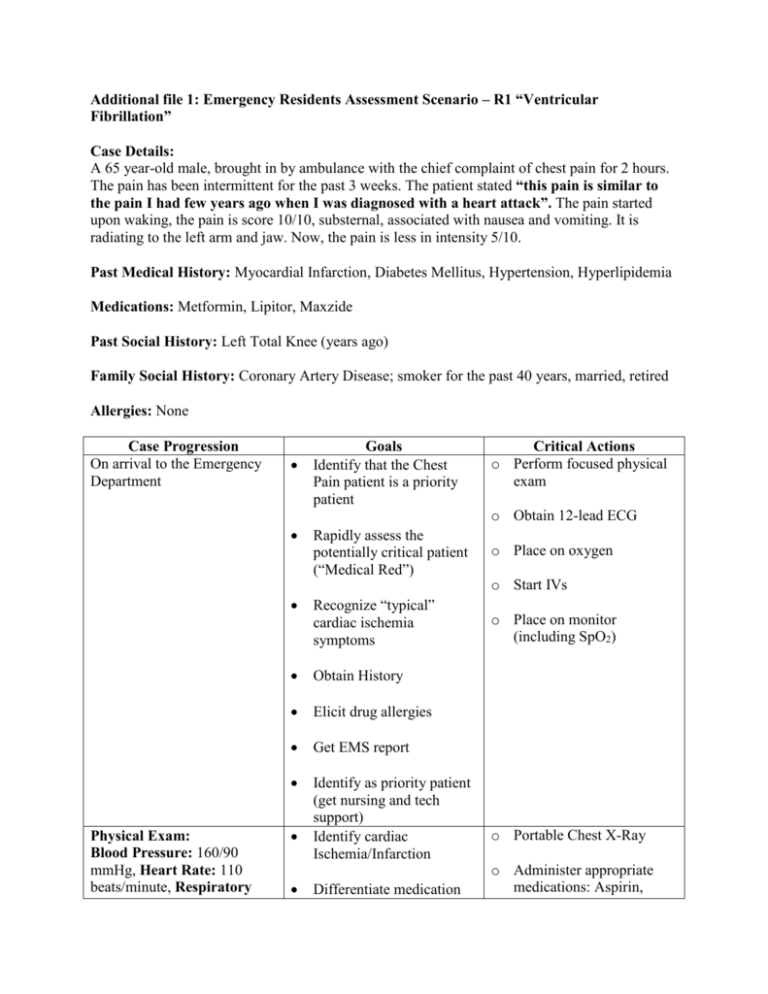
Additional file 1: Emergency Residents Assessment Scenario – R1 “Ventricular Fibrillation” Case Details: A 65 year-old male, brought in by ambulance with the chief complaint of chest pain for 2 hours. The pain has been intermittent for the past 3 weeks. The patient stated “this pain is similar to the pain I had few years ago when I was diagnosed with a heart attack”. The pain started upon waking, the pain is score 10/10, substernal, associated with nausea and vomiting. It is radiating to the left arm and jaw. Now, the pain is less in intensity 5/10. Past Medical History: Myocardial Infarction, Diabetes Mellitus, Hypertension, Hyperlipidemia Medications: Metformin, Lipitor, Maxzide Past Social History: Left Total Knee (years ago) Family Social History: Coronary Artery Disease; smoker for the past 40 years, married, retired Allergies: None Case Progression On arrival to the Emergency Department Goals Identify that the Chest Pain patient is a priority patient Critical Actions o Perform focused physical exam o Obtain 12-lead ECG Physical Exam: Blood Pressure: 160/90 mmHg, Heart Rate: 110 beats/minute, Respiratory Rapidly assess the potentially critical patient (“Medical Red”) o Place on oxygen Recognize “typical” cardiac ischemia symptoms o Place on monitor (including SpO2) Obtain History Elicit drug allergies Get EMS report Identify as priority patient (get nursing and tech support) Identify cardiac Ischemia/Infarction Differentiate medication o Start IVs o Portable Chest X-Ray o Administer appropriate medications: Aspirin, Rate: 20 breath/ minute, SpO2: 100% on 4L NC General Appearance: the patient is awake/Alert, Anxious and Diaphoretic Lungs: clear Heart: tachycardia, regular heart rate and no murmur Perfusion: good Abdomen: soft and no organomegaly intolerance from true allergy Nitroglycerine, morphine, heparin o Reperfusion therapy Recognize the need for Cardiac Catheterization vs. rapid intervention in Acute Thrombolytic Coronary Syndrome (ACS)/ STEMI o Reassess after interventions (pain score Cardiology Consult and vital signs) EMS Report: Chest Pain protocol started. Given sublingual Nitroglycerin NTG 0.4 mg 3 times Chest Pain score 10/106/10 Blood Pressure 190/110150/90 Patient refuses Aspirin (GI upset) 1st 12-lead: Anterior ST segment Elevation Myocardial Infarction (STEMI) Patient becomes unresponsive Eyes roll back No movement Monitor shows: Ventricular Fibrillation (VF) Identify pulseless arrest o Start CPR immediately Differentiate VF from stable rhythms o Appropriate defibrillation Assume leadership role directing “code” Recognize VF requires rapid intervention (defibrillation) Use the correct ACLS algorithm for pulseless rhythms o Provide a BLS airway o Resume CPR immediately after shock (for 2 min. or 5 cycles) o Appropriate medications administration: Epinephrine or Vasopressin during compressions At two minutes: CPR stops and patient remains in VF No pulse Patient is ashen and mottled Vomitus in the airway At two minutes: CPR stops monitor shows sinus rhythm: 120 beats/ minutes, Blood Pressure: 100/50mmHg, SpO2 94% with bag valve mask. Patient is agitated Adequate CPR Recognize pulseless rhythm o Intubate & confirm tube placement Recognize shockable rhythm o Appropriate ongoing CPR and shocks Recognize the need for advanced airway o Appropriate antiarrhythmic (i.e. Lidocaine or Amiodarone) Recognize Return of Spontaneous Circulation (ROSC) o Reassess condition Recognize hypoxemia as dangerous in coronary ischemia o Post intubation management o Portable chest xray End Scenario



